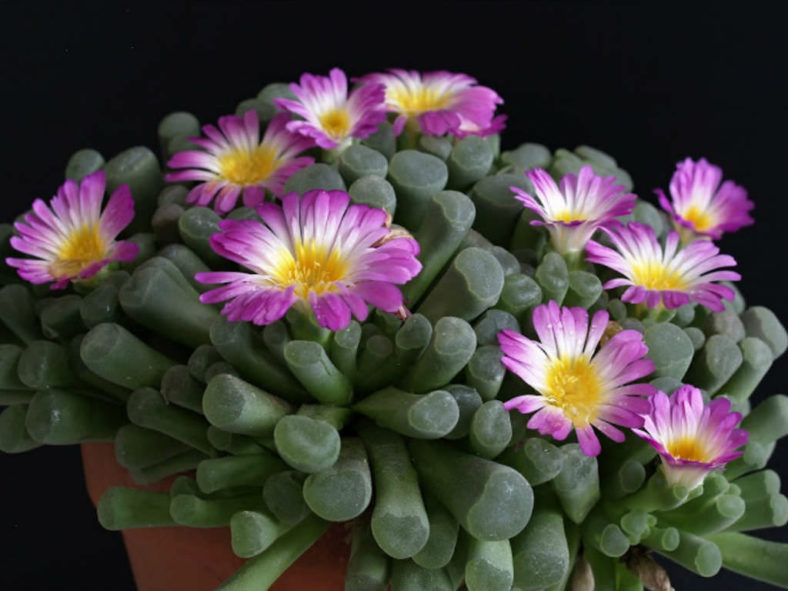Frithia is a genus of low-growing succulent perennials with erect club-shaped leaves with a window at the apex and solitary red to purple daisy-like flowers that appear in late winter.
The genus was established by N.E. Brown (1925), a taxonomist based at Kew Herbarium. However, no species were assigned to this genus at that stage, and only later was a full description of Frithia pulchra given (Brown 1926). It was named after Frank Frith (1872 – 1954), a railway services gardener stationed at Park Station, Johannesburg, who took the specimens to Brown at Kew while visiting London. Brown named Frithia in honor of the man who brought him the specimens. The specific epithet "pulchra" is from the Latin "pulcher," meaning "beautiful."
Growing Conditions
Light: The plants will take as much light as you can give them, but fierce sunshine could "scorch" them. In their habitat, they overcome this problem by only having the leaf tips above the ground.
Soil: An open compost is essential, and if the only pot available is a deep one, fill the bottom half with coarse grit or gravel.
Water: Frithias are not shy of water and should be watered regularly during the growing season, but the water must drain away quickly. Keep the plants dry in winter.
Fertilizer: When in growth, feed the plants every two or three weeks with a liquid low-nitrogen fertilizer.

General Care
Frithias are summer growers and relatively easy to cultivate. They need light, sporadic watering during their winter resting period and require moderate sprinkling in summer. They are rot-prone if kept too moist when the heat turns off their growth cycle. Gritty, well-drained soil containing a small amount of organic material will keep these plants happy. Frithias can be grown in pots or out of doors in a rockery. Soak the compost thoroughly but allow it to dry out perfectly between waterings. Underwatering can lead to disastrous results, so be generous with water in summer. Nearly all problems occur due to overwatering and poor ventilation, especially when weather conditions are dull and cool or very humid. Keep the soil dry in the winter. These plants do well in the full blazing sun and with some shade in summer.
Propagation
Frithias can be grown from seed, sown in a gritty sandstone medium, or propagated vegetatively by division.
Links
- Back to genus Frithia
- Succupedia: Browse succulents by Scientific Name, Common Name, Genus, Family, USDA Hardiness Zone, Origin, or cacti by Genus